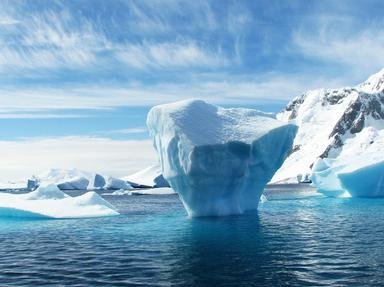Quiz Answer Key and Fun Facts
1. Both polar regions, aka Arctic and Antarctic, are famous for being very, very cold. Which one is colder, the North or South Pole?
2. Are the North and South Pole on water or on land?
3. So the polar regions are cold, but are they also wet?
4. There is a difference between the heights (altitudes) of the North and South Poles.
5. The Antarctic Treaty defines Antarctica as all the lands south of 60 degrees south latitude. The population of that area is never more than 5,000 people in summer, about 1,000 in winter.
The Arctic is less well-defined, but how many people live north of the 60 degree north latitude?
6. How long does a 'polar' day last from sunrise to sunset?
7. From most places in the world you can walk to the North Pole, but you can't walk to the South Pole.
8. The Antarctic is littered with research stations, why isn't the Arctic?
9. No one owns the Antarctic as yet, but seven nations claim a part of the continent. Which part is the most coveted (has the most nations claiming it)?
10. What time zone is the South Pole in?
Source: Author
triviapaul
This quiz was reviewed by FunTrivia editor
Exit10 before going online.
Any errors found in FunTrivia content are routinely corrected through our feedback system.


